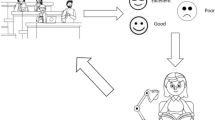Abstract
Sentimental analysis is a simple natural language processing technique for classifying and identifying the sentiments and views represented in a source text. Corona pandemic has shifted the focus of education from traditional classrooms to online classes. Students’ mental and psychological states alter as a result of this transition. Sentimental study of the opinions of online education students can aid in understanding the students’ learning conditions. During the corona pandemic, only, students enrolled in online classes were surveyed. Only, students who are in college for pre-graduation, graduation, or post-graduation were used in this study. To grasp the pupils’ feelings, machine learning models were developed. Using the dataset, we were able to identify and visualize the students’ feelings. Students’ favorable, negative, and neutral opinions can be successfully classified using machine learning algorithms. The Naive Bayes method is the most accurate method identified. Logistic regression, support vector machine, decision tree, and random forest these algorithms also gave comparatively good accuracy.
Access this chapter
Tax calculation will be finalised at checkout
Purchases are for personal use only
Similar content being viewed by others
References
Pang B, Lee L, Vaithyanathan S (2002) Thumbs up? Sentiment classification using machine learning techniques
Agarwal A, Xie B, Vovsha I, Rambow O, Passonneau R (2011) Sentiment analysis of Twitter data
Goyal S (2017) Review paper on sentiment analysis of Twitter data using text mining and hybrid classification approach. Int J Eng Dev Res 5(2):2321–9939
Behdenna S, Barigou F, Belalem G (2018) Document level sentiment analysis: a survey. EAI Endorsed Trans Context-aware Sys Appl 4(13)
Leong CK, Lee YH, Mak WK (2012) Mining sentiments in SMS texts for teaching evaluation. Expert Syst Appl 39(3):2584–2589
Miller GA, Beckwith R, Fellbaum C, Gross D, Miller KJ (1990) Introduction to word net: an on-line lexical database. Int J Lexicogr 3(4):235–244
Pong-inwong C, Rungworawut WS (2014) Teaching senti-lexicon for automated sentiment polarity definition in teaching evaluation. In: 10th IEEE conference on semantics, knowledge and grids (SKG), pp 84–91. ISBN 978-1-4799-6715-5
ltrabsheh N, Cocea M, Fallahkhair S (2014) Learning sentiment from students’ feedback for real-time interventions in classrooms. In: Third international conference on adaptive and intelligent systems, ICAIS 2014. Springer, Bournemouth, UK, pp 40–49
El-Halees A (2021) Mining opinions in user-generated contents to improve course evaluation. Softw Eng Comput Syst 107–115
Dhawan S (2020) Online learning: a panacea in the time of COVID-19 crisis. J Educ Technol Syst 1
Chakraborty P et al (2021) Opinion of students on online education during the COVID‐19 pandemic. In: Human Behavior and emerging technologies 3(3):357–365
Strielkowski W (2020) COVID-19 pandemic and the digital revolution in academia and higher education
Chauhan GS, Agrawal P, Meena YK (2019) Aspect-based sentiment analysis of students’ feedback to improve teaching–learning process. In: Information and communication technology for intelligent systems. Springer, Singapore, pp 259–266
Williams L et al (2019) Comparing the utility of different classification schemes for emotive language analysis. J Classif 3
Praveen Kumar T, Manorselvi A, Soundarapandiyan K (2020) Exploring the students feelings and emotion towards online teaching: sentimental analysis approach. In: International working conference on transfer and diffusion of IT. Springer, Cham
Naresh A, Venkata Krishna P (2020) An efficient approach for sentiment analysis using machine learning algorithm. In: Evolutionary intelligence, no 2. Springer Science and Business Media LLC
Wang L, Niu J, Yu S (2020) SentiDiff: combining textual information and sentiment diffusion patterns for Twitter sentiment analysis. In: IEEE transactions on knowledge and data engineering, vol 32, no 10, pp 2026–2039
Author information
Authors and Affiliations
Corresponding author
Editor information
Editors and Affiliations
Rights and permissions
Copyright information
© 2022 The Author(s), under exclusive license to Springer Nature Singapore Pte Ltd.
About this paper
Cite this paper
Mathew, S.T., Jacob, L. (2022). Sentimental Analysis on Online Education Using Machine Learning Models. In: Shukla, S., Gao, XZ., Kureethara, J.V., Mishra, D. (eds) Data Science and Security. Lecture Notes in Networks and Systems, vol 462. Springer, Singapore. https://doi.org/10.1007/978-981-19-2211-4_37
Download citation
DOI: https://doi.org/10.1007/978-981-19-2211-4_37
Published:
Publisher Name: Springer, Singapore
Print ISBN: 978-981-19-2210-7
Online ISBN: 978-981-19-2211-4
eBook Packages: Intelligent Technologies and RoboticsIntelligent Technologies and Robotics (R0)




